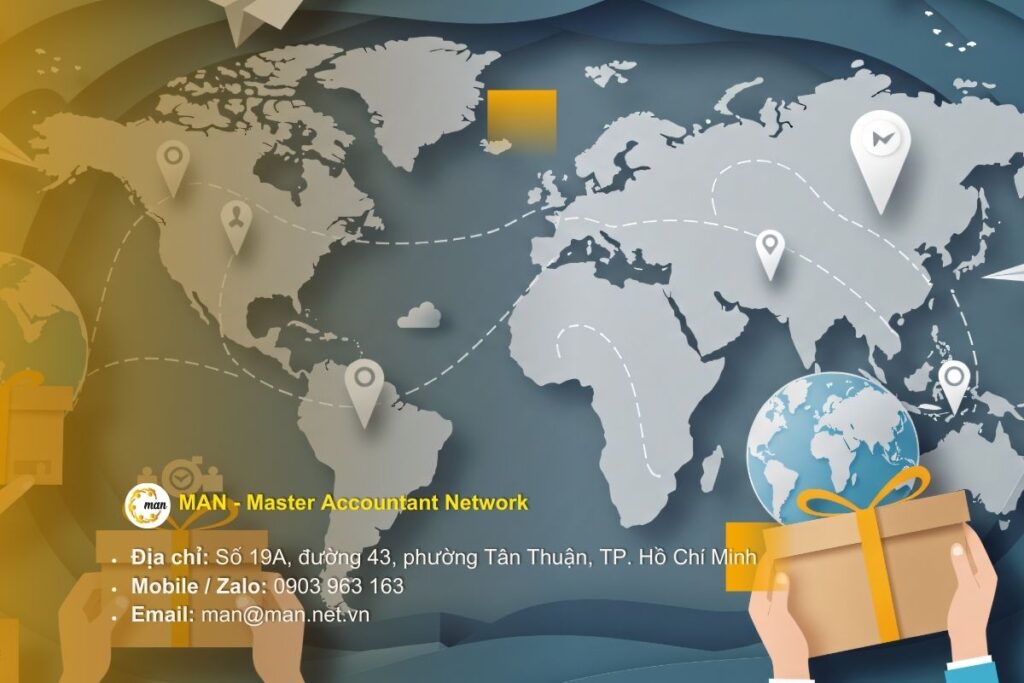Supporting inspections of related-party transactions is a key step in helping businesses comply with Vietnamese tax laws on transfer pricing, while reducing the risk of being subject to additional collection and increasing transparency in the management of inter-company transactions. According to General Department of Taxation By 2023, approximately 35–40% FDI enterprises in Vietnam will have to adjust their profits due to incomplete documents. This article analyzes in detail the concept, role, content of documents that need to be prepared, actual procedures, common risks and provides guidance on how to optimize inspection support reports, helping businesses prepare effectively for tax inspections.
Concept and role of supporting related transaction inspection
What is related party transaction inspection support?
Support for inspection of related party transactions is the process by which enterprises prepare and provide documents and data related to inter-company transactions to help tax authorities correctly assess market prices and comply with transfer pricing regulations. According to Vietnamese legal guidelines and OECD standards, inspection support includes not only the submission of documents but also the assessment of transfer pricing risks, verification of the reasonableness of related party transactions, and ensuring transparent and complete records.
The main role of this activity is:
Help tax authorities check and accurately determine business profits and taxes payable.
Minimize the risk of tax collection due to errors in transfer pricing documents.
Is an important legal basis to prove market prices for inter-company transactions.
Role for business
For businesses, supporting inspection of related-party transactions brings many practical benefits:
Help businesses comply with Vietnamese tax laws and OECD standards.
Support business representatives in tax inspections, thereby reducing the risk of being overcharged or adjusting profits.
Enhance transparency in intercompany transaction management and transfer pricing strategies.
Example: A multinational company under audit by Vietnamese tax authorities has avoided being charged $1 million in back taxes thanks to its comprehensive and detailed transfer pricing documentation and demonstrated the valuation method applied. arm's length principle is reasonable.
Document content to be prepared before inspection
To support effective transfer pricing inspections, businesses need to fully prepare transfer pricing dossiers and related documents. Careful preparation helps reduce the risk of collection, demonstrate market prices, and comply with Vietnamese tax laws and OECD standards.

Transfer pricing documents and related reports
Businesses need to compile the following types of documents:
Master File, Local File, IGF: Provides comprehensive information on group structure, transfer pricing strategies and intercompany transactions.
Transfer pricing documentation: Demonstration of the arm's length principle pricing method.
Related party transaction appendix (GDLK 01) and related reports: Includes a list of transactions, values, and valuation methods.
Business information and transfer pricing strategy
Corporate structure, ownership structure, subsidiaries: Including domestic and foreign branches.
Transfer pricing strategy, valuation methods: Help tax authorities understand how to allocate profits and manage risks.
The hypothetical data example: Global revenue of 1 billion USD, pre-tax profit of 120 million USD, provides a basis for assessing the reasonableness of profit allocation.
In addition to corporate information, cross-border related transactions need to be recorded in detail to ensure transparency and reduce transfer pricing risks.
Cross-border affiliate trading
List transactions of goods, services, and transfers of assets between companies in the group.
Valuation method: Apply arm's length principle, ensuring market price is accurately reflected.
Example: A subsidiary in Vietnam provides services to its parent company in Singapore at a market price of USD 500,000/year.
Practical procedures to support inspection

Prepare for inspection
Before the tax authority begins an audit, the company should review all transfer pricing documentation and related reports. This helps assess transfer pricing risks, identify material transactions and ensure that all necessary data is available. The list of documents should include the Master File, Local File, IGF, related party transaction appendix and additional reports demonstrating the arm's length principle valuation method.
During the inspection
During the inspection phase, business representatives will work directly with the tax authorities to explain related-party transactions and valuation methods. This is an opportunity to explain cross-border transactions in detail, demonstrate the transparency of the records and ensure the business complies with Vietnamese tax laws. At the same time, if the tax authorities request additional or adjusted records, the business needs to update promptly.
After inspection
At the end of the inspection, the enterprise should review the conclusions, adjust the records if errors are detected and learn from the experience to optimize the records for the next reporting periods. This not only reduces the risk of tax collection but also helps improve the process of preparing records for future inspections, while enhancing the ability to transparently manage related-party transactions.
Common risks and notes when supporting inspection
Common mistakes
When assisting in the inspection of related-party transactions, businesses often encounter some major errors. Common examples include lack of information on the group structure, incomplete transaction details, or valuation methods not applied according to the arm's length principle. These errors can lead to profit adjustments, increased tax collection risks, and damage to the business's reputation with tax authorities.
How to optimize your profile
To minimize risks, businesses should fully combine Master File, Local File and IGF, ensuring transparent and easy-to-check records. Controlling the quality of records and updating information when transactions or legal regulations change is essential. At the same time, valuation methods must strictly follow the arm's length principle, helping to demonstrate fair market value and increase tax compliance.
Legal regulations and international standards
Vietnam Tax Law on Transfer Pricing
To ensure compliance with the law and reduce the risk of collection, businesses need to prepare complete transfer pricing documents, applying the arm's length principle. This helps tax authorities accurately assess related-party transactions between companies in the group.
Illustrative example: According to the General Department of Taxation in 2023, about 40% FDI companies in Vietnam had their profits adjusted due to incomplete or inaccurate transfer pricing documents.
OECD rules on cross-border profits
OECD guide businesses to establish Master File, Local File and IGF, to increase transparency and manage risks on a global scale. The arm's length principle is applied synchronously, helping businesses standardize valuation methods and ensure complete records for inspections.
Comparison table of Vietnamese and OECD laws
Before going into the practice of preparing supporting documents for inspection, it is necessary to understand the differences between Vietnamese tax law and OECD standards, especially in the requirements for documents, scope of application and purpose of use. The table below summarizes the important criteria:
| Criteria | Vietnam Tax Law | OECD Guidelines |
|---|---|---|
| Request Profile | Local File | Master File, Local File, IGF |
| Scope of application | Affiliated transactions in Vietnam | Multinational enterprises, international intercompany transactions |
| Pricing principles | Arm's length principle | Arm's length principle |
| Purpose | Demonstrate market value, comply with the law | Support global risk management, transparent inter-company transactions |
The above table helps businesses understand the legal requirements and international standards, thereby preparing the Master File, Local File and IGF documents accurately and completely, ensuring effective support for inspection of related-party transactions.
Conclusion and recommendations
Supporting the inspection of related-party transactions is an important step to help multinational enterprises manage taxes effectively. Preparing complete transfer pricing documents, including Master File, Local File and IGF, not only helps to prove market prices but also reduces the risk of tax arrears, while ensuring compliance with Vietnamese tax law and OECD standards.
To optimize efficiency and minimize risks, businesses should:
Fully incorporate Master File, Local File and IGF in the preparation of inspection support documents.
Update records regularly when there are changes in transactions, valuation methods or regulations.
Conduct regular transfer pricing risk assessments to help minimize legal and financial issues.
Recommendations: Enterprises can contact MAN for advice on building standard documents, transparent inter-company transactions, complying with the law and minimizing the risk of tax collection.
Contact information MAN – Master Accountant Network
Address: No. 19A, Street 43, Tan Thuan Ward, Ho Chi Minh City
Hotline / Zalo: 0903963163
E-mail: man@man.net.vn
MAN Editorial Board – Master Accountant Network




